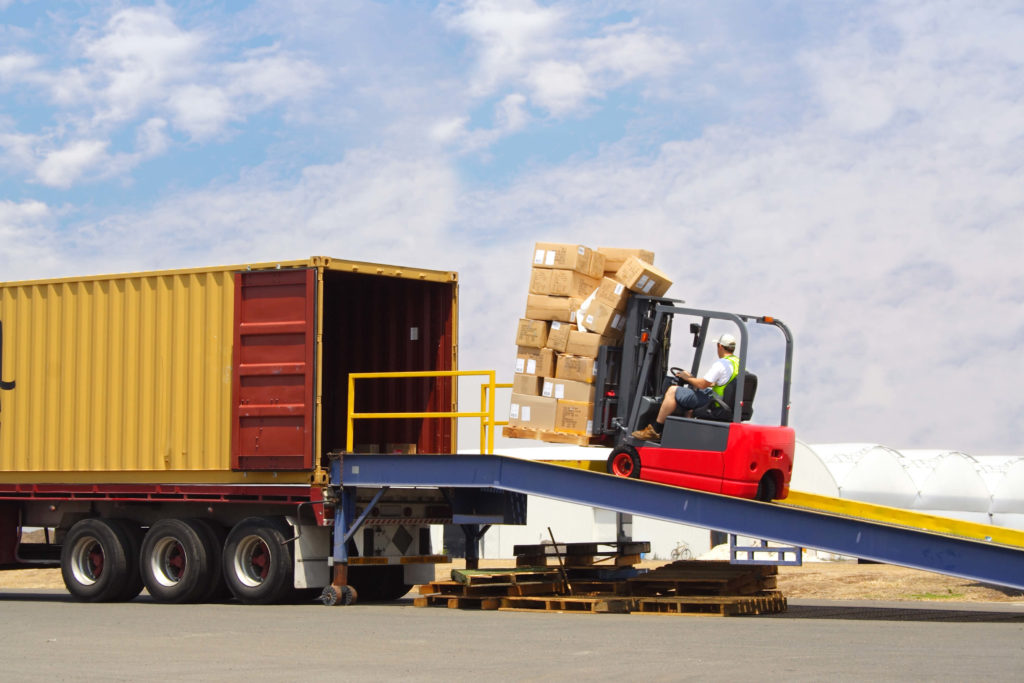Forklift Requirements (2025) – OSHA Certification & Safety Checklist
Posted by: admin on March 25, 2025

Forklifts operate on various surfaces, including inclines that demand precise handling to prevent mishaps. Slope regulations exist to maintain stability and ensure compliance with workplace safety standards. Adhering to proper guidelines is the responsibility of every forklift operator, as it protects workers and reduces liability risks. Completing online forklift training enhances safety awareness and empowers operators to follow regulatory standards.
What is a Forklift Ramp Slope?
A forklift ramp slope refers to the incline angle a forklift navigates when ascending or descending a ramp. It is commonly measured using either a percentage grade or degrees. The formula for calculating slope percentage is:
(Rise / Run) × 100
For instance, if a ramp rises 12 inches over a length of 120 inches, the equation yields a 10% grade. Understanding these calculations helps operators determine whether an incline meets safety guidelines.
OSHA Guidelines for Forklift Ramp Slopes
Federal regulations specify the maximum allowable incline for powered industrial trucks. According to OSHA 1910.178, critical safety requirements include:
- A slope exceeding 10 degrees is classified as a ramp.
- Operators must ascend and descend grades slowly to maintain control.
- Forklifts carrying loads must keep the forks pointed uphill, whether moving forward or in reverse.
- A tilted-back load provides added stability during transport.
Staying within these parameters is crucial as it prevents rollovers and maintains a secure operating environment. Non-compliance with these guidelines can lead to accidents, injuries, and even fatalities, underscoring the importance of adhering to OSHA standards.
What is the Maximum Safe Slope for a Forklift Ramp?
Different forklift models feature varying capabilities regarding incline navigation. While OSHA enforces a maximum slope for forklift ramps at one vertical to three horizontal (20 degrees above horizontal), manufacturers provide gradeability ratings that specify a unit’s ability to handle slopes. Electric forklifts often sustain steeper grades than internal combustion models, making adherence to manufacturer specifications essential.
Forklift Ramp Grade Guidelines by Type
Forklift Type Maximum Recommended Slope
Electric Pallet Jack 10% – 15%
Sit-Down Counterbalance 10% – 12%
Rough Terrain Forklift 20% – 30%
Reviewing equipment manuals ensures that operational limits align with workplace ramp conditions.
Safe Operating Tips for Forklifts on Ramps
Navigating slopes requires precision to prevent accidents. The following best practices enhance safety:
- Maintain a steady speed: Avoid sudden acceleration or braking.
- Travel with loads uphill: Always keep the forks elevated in the correct direction.
- Use reverse when necessary: When descending with an empty forklift, back down the slope while maintaining forks pointed downward.
- Monitor stopping distances: Stopping on an incline requires additional space due to gravitational pull.
- Performing routine inspections is a proactive measure that ensures tires, brakes, and hydraulic systems function correctly before operating on a grade. This safety-conscious approach minimizes workplace hazards and enhances forklift control on sloped surfaces. Implementing these strategies minimizes workplace hazards and enhances forklift control on sloped surfaces.
Common Mistakes to Avoid on Forklift Ramps
Operators sometimes make critical errors when handling inclines, increasing the risk of accidents. The most frequent mistakes include:
- Turning on a slope: Any deviation from a straight path can cause tip-overs.
- Exceeding weight limits: Overloaded forklifts reduce maneuverability and may strain braking systems.
- Failing to inspect ramps: Cracks or debris on inclines can destabilize forklift tires.
- Neglecting traction concerns: Wet or oily surfaces create slip hazards, requiring extra caution.
Frequently Asked Questions About Forklift Ramp Slopes
What is the OSHA standard for ramp slope?
OSHA limits inclines to a maximum of one vertical to three horizontal, translating to 20 degrees above the horizontal.
Can forklifts go up and down steep ramps safely?
Traveling up or down a steep incline requires controlled movements. When carrying a load, always move with the forks positioned uphill. Empty forklifts should descend ramps in reverse while keeping the forks lowered.
What is the best way to travel up a ramp with no load?
An unloaded forklift should ascend a ramp with the forks pointing downward. This approach maintains stability and prevents tipping.
CertifyMe: Your Forklift Safety Solution
CertifyMe provides forklift operators with the training necessary to navigate slopes safely and meet OSHA forklift ramp slope requirements. Investing in proper certification enhances workplace safety while ensuring compliance with industry regulations. Enroll today to strengthen operational efficiency and reduce accident risks.
Welcome to CertifyMe.net
CertifyMe.net has offered online forklift certification since 1999. With Our Convenient online program. your employess can earn their certification in an hour or less.
Browse Online Certifications:
This low-cost program can be compeleted anytime, anywhere!






